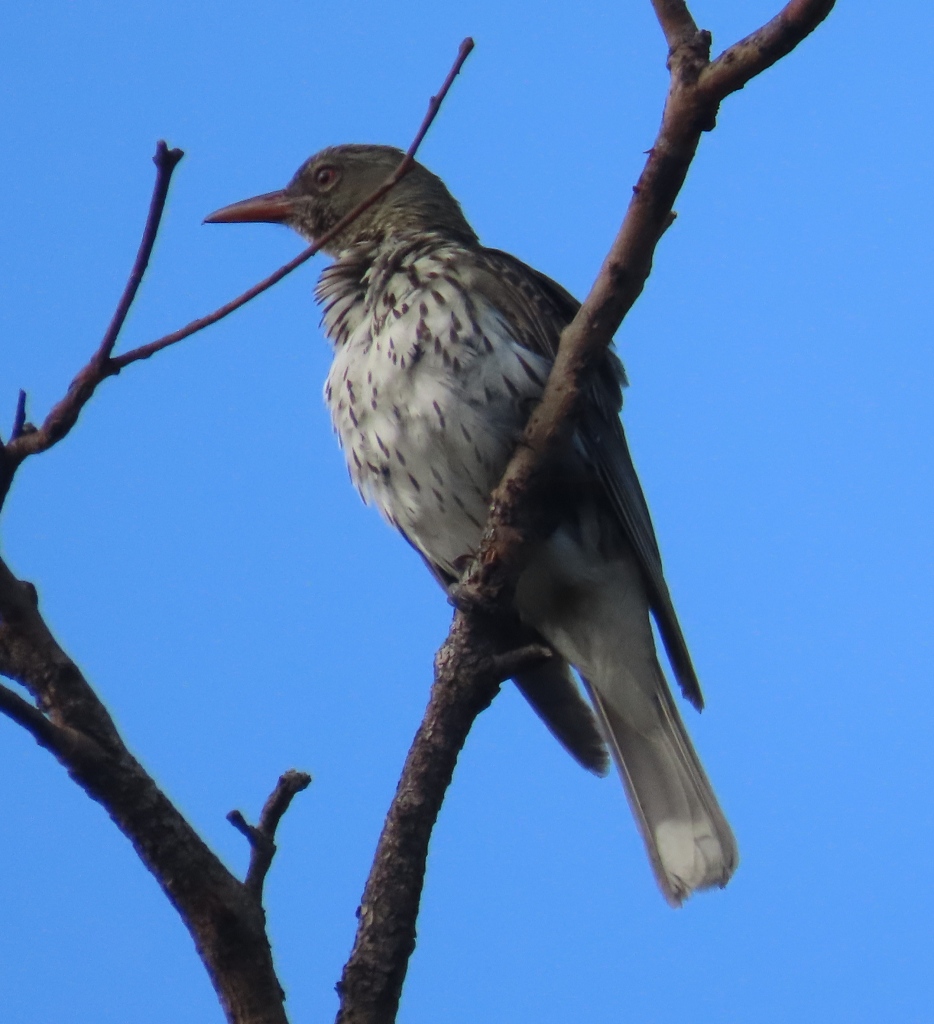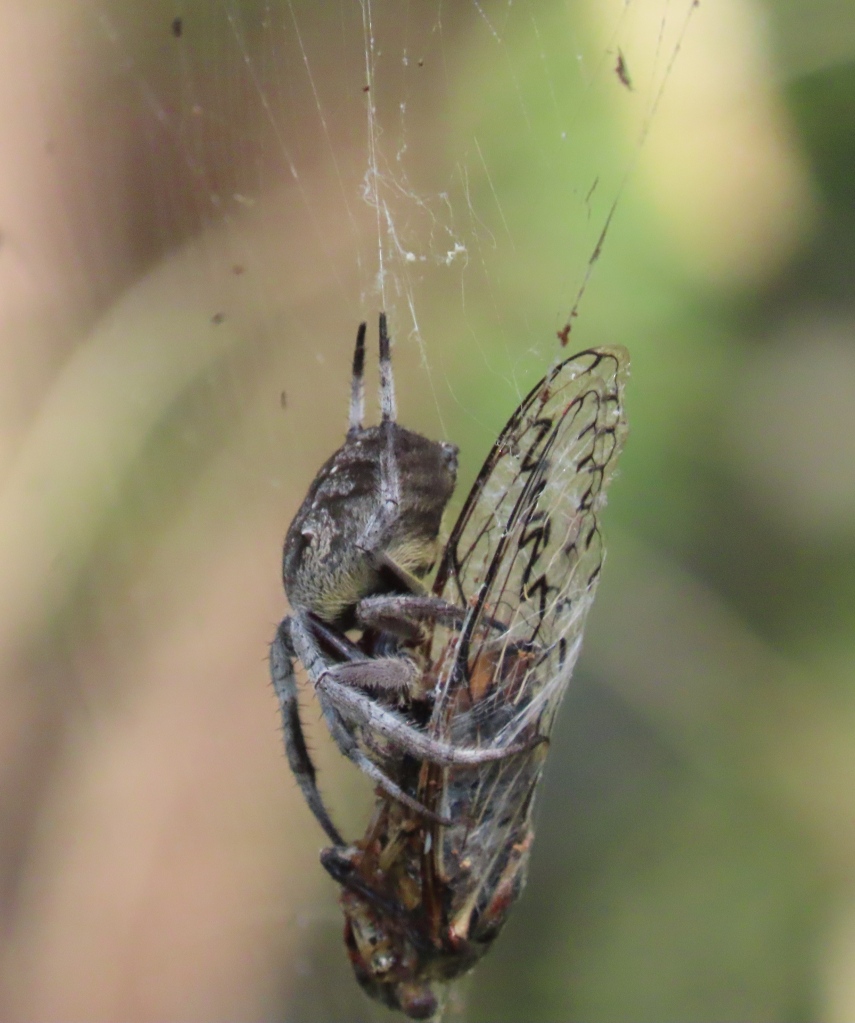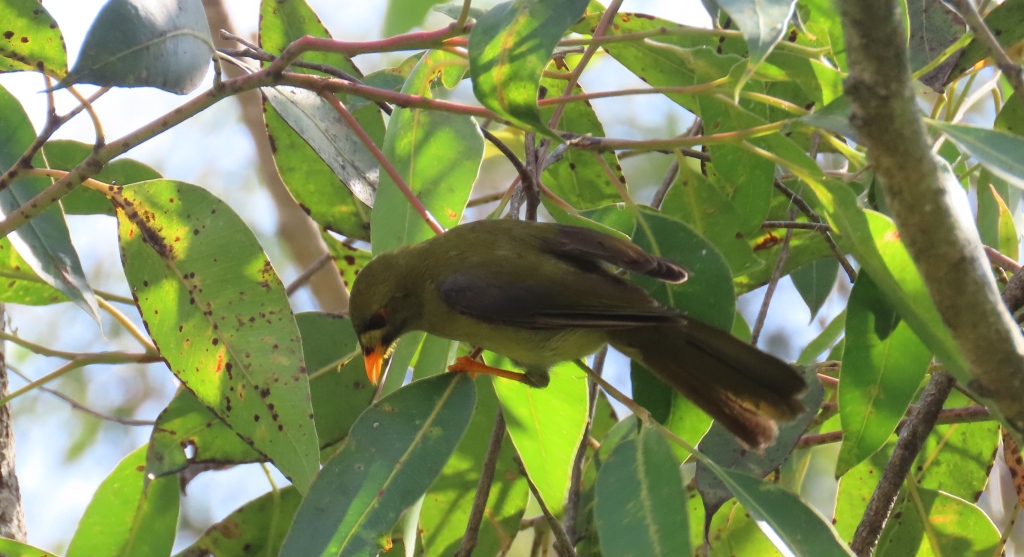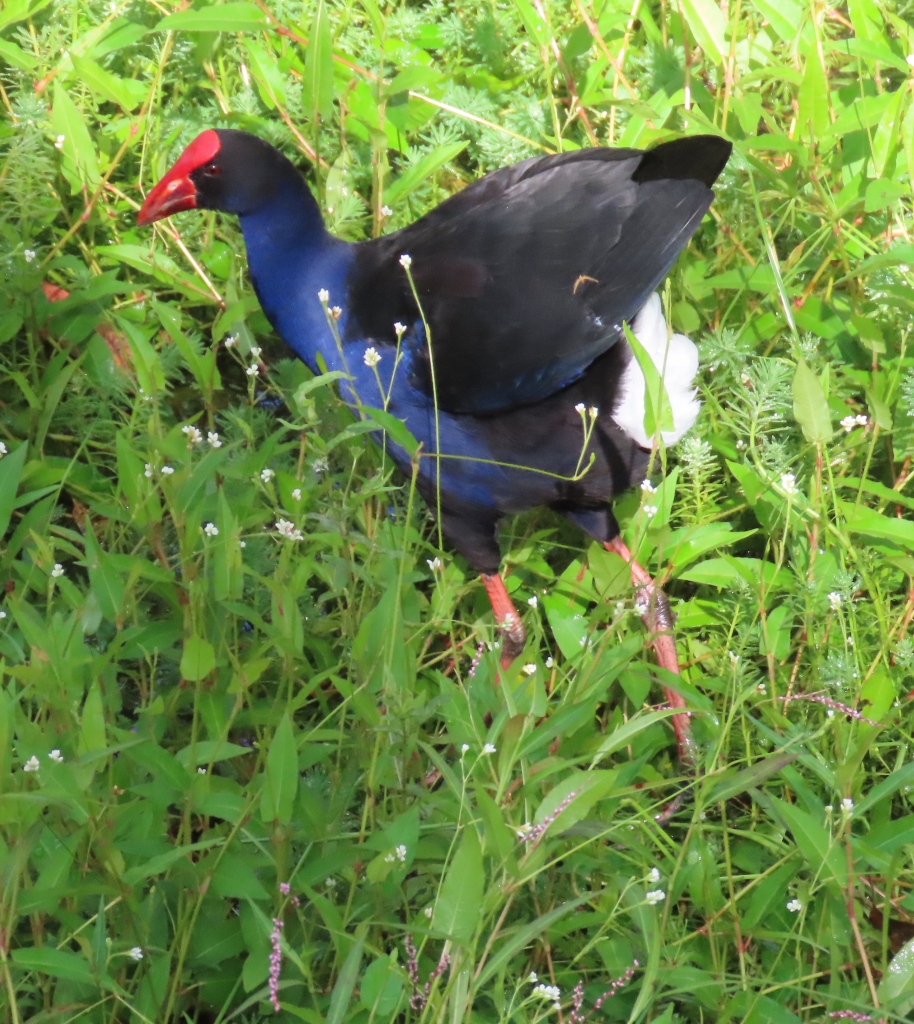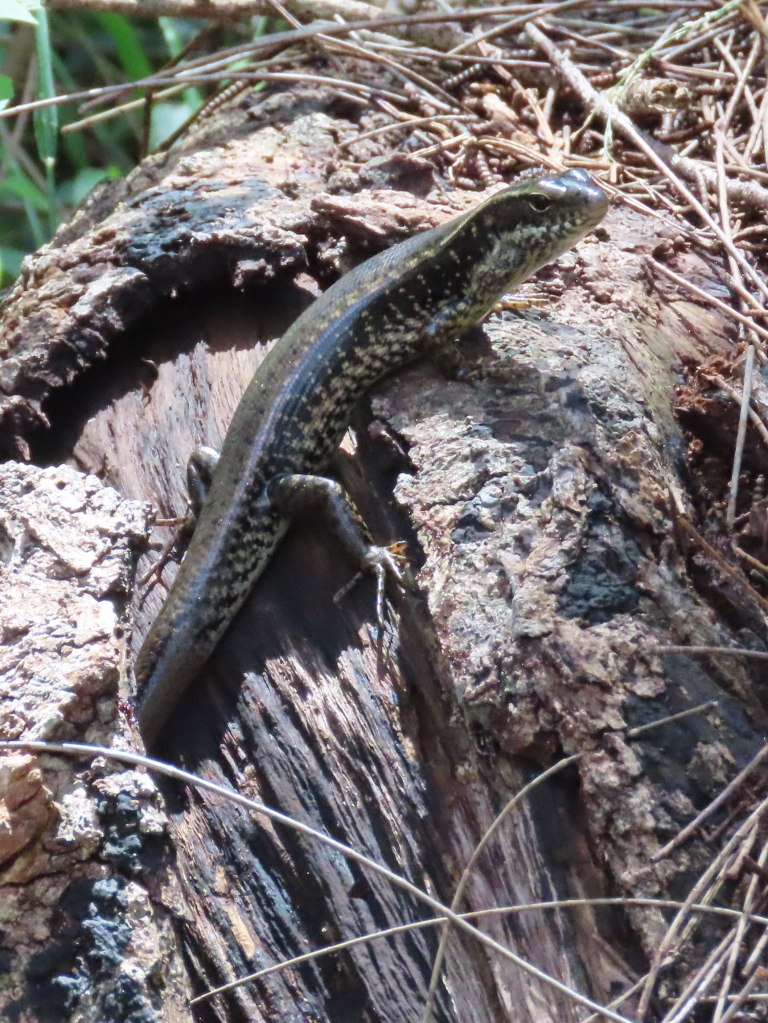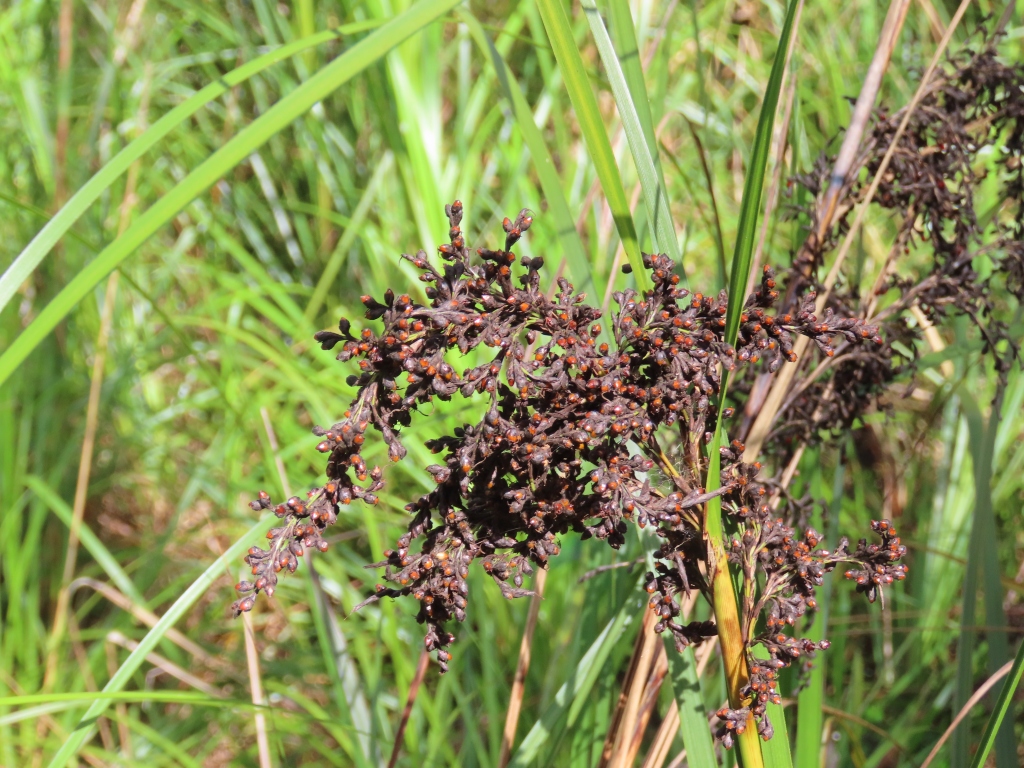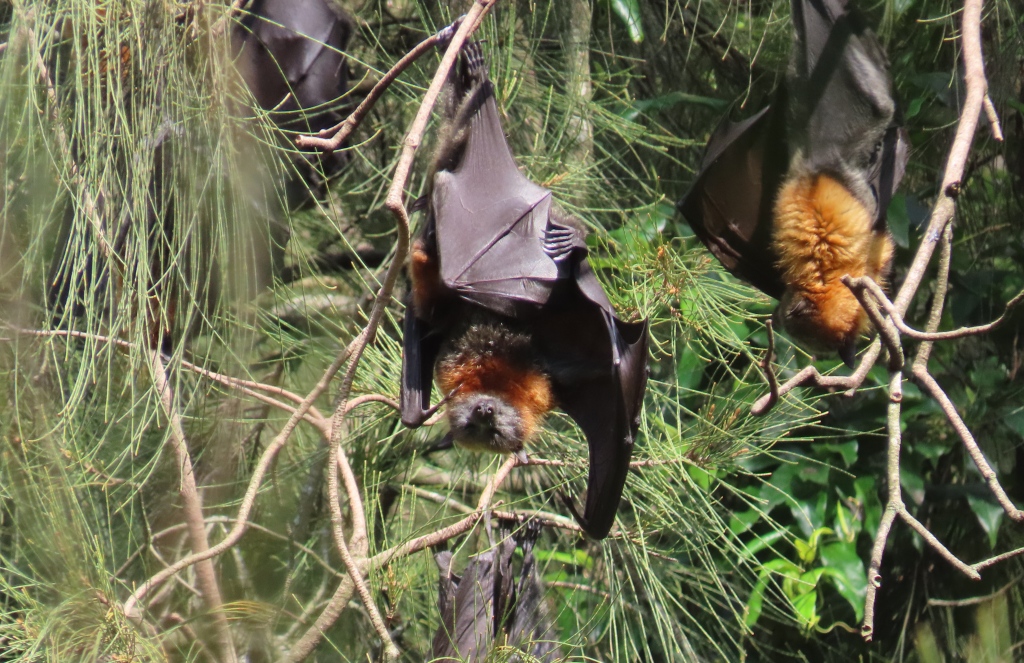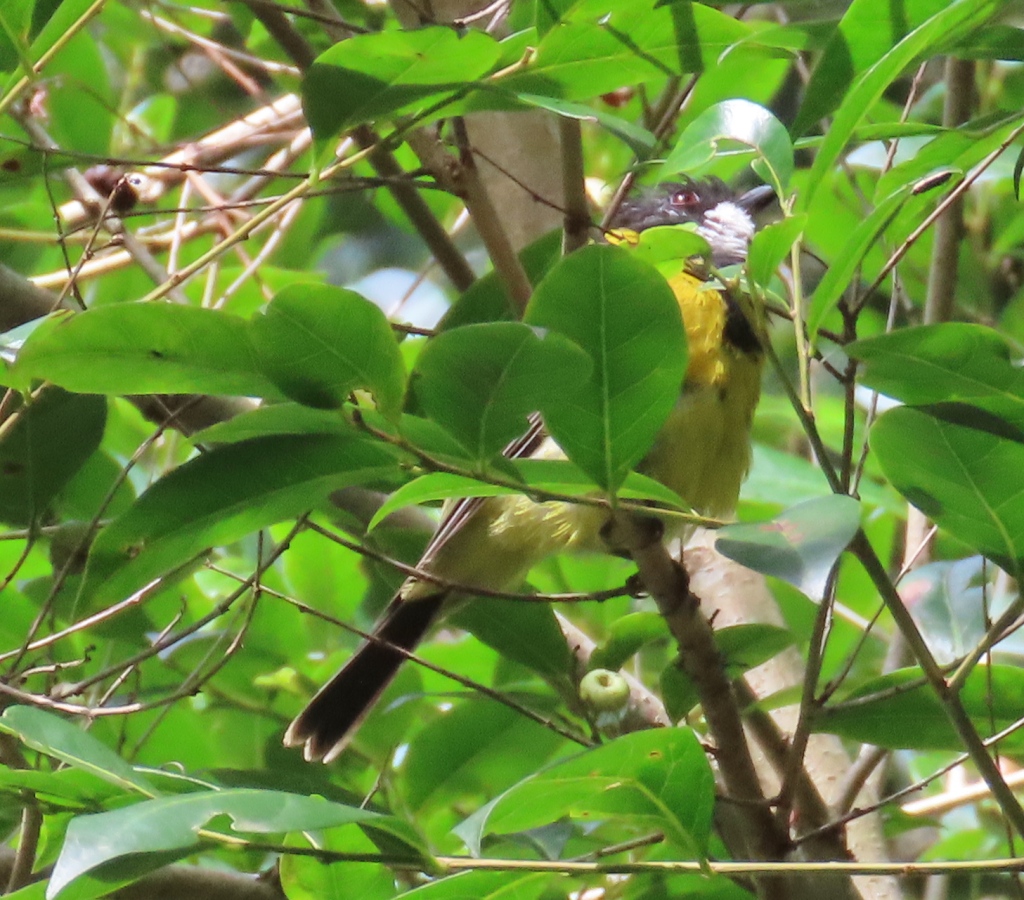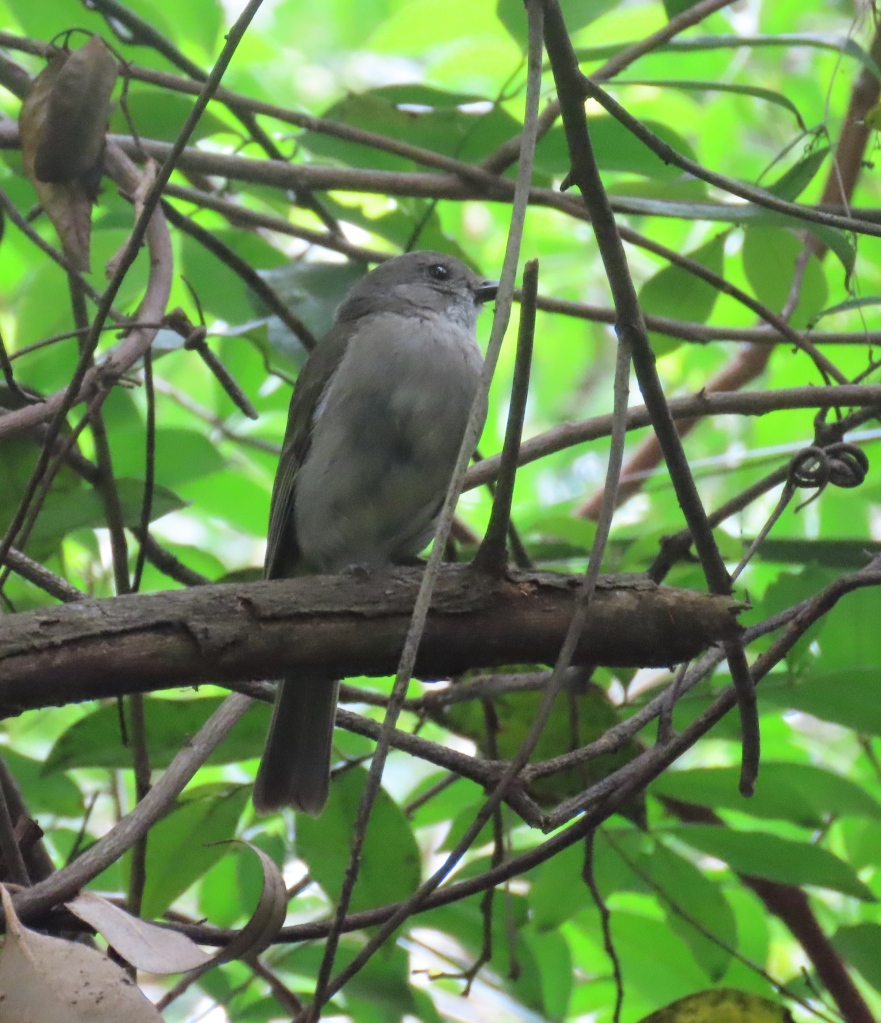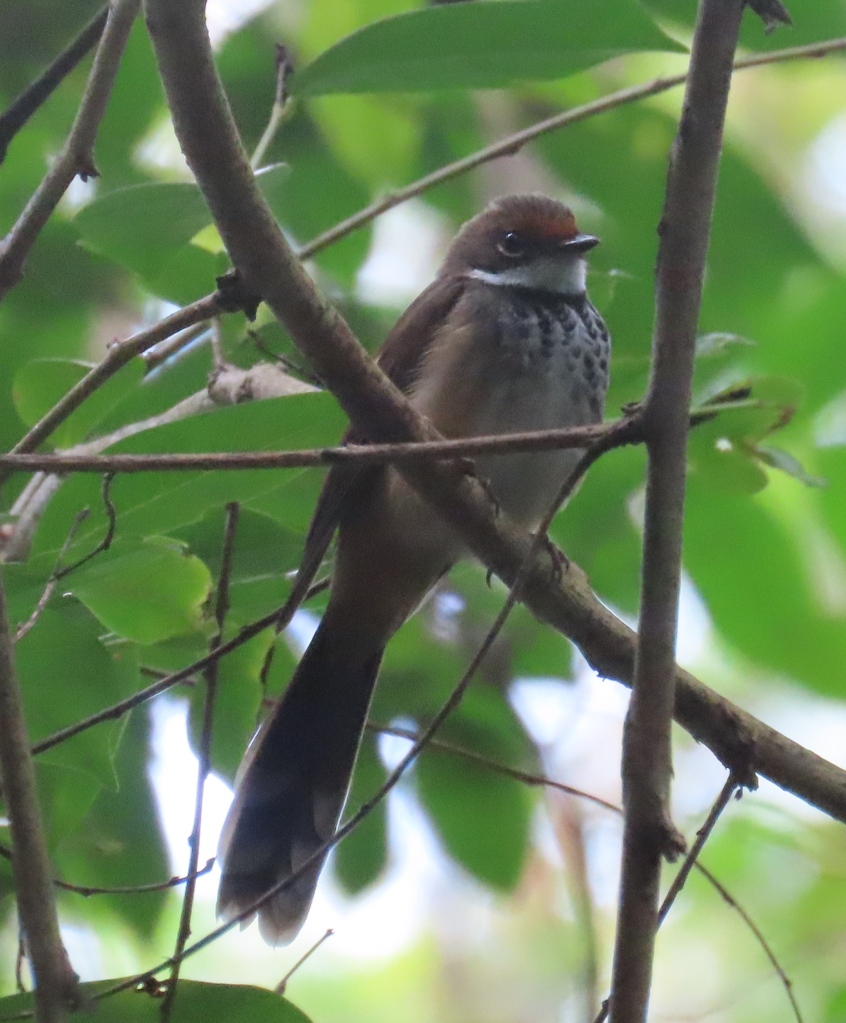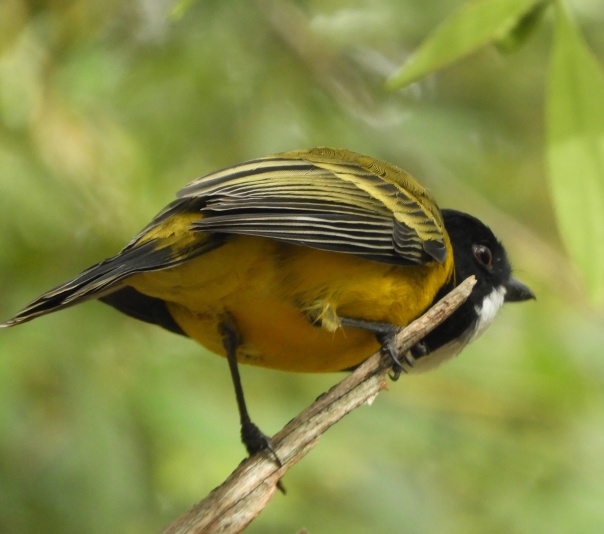Category Archives: Whistler
Golden Whistler calling – a short video
This morning, a Golden Whistler stayed in one spot for long enough for me to get out my camera and record a few seconds of his song. So, for your enjoyment, here it is!
Golden Whistlers are small birds, about the size of a wren. They have a black head and a white bib, and the golden chest, underbelly, and collar that give them the first part of their name. The second part of the name comes from their lovely whistling calls. I’ve published more videos and pictures of previous sightings.
Common name: Golden Whistler
Scientific name: Pachycephala pectoralis
Approximate length: 16-18 cm
Date spotted: 3 December 2025 (summer)
Location: Manly Dam Reserve, New South Wales, Australia: 33°46’45.0″S 151°14’54.2″E
Golden Whistlers calling
It’s a lovely experience walking through an Australian forest, with Golden Whistlers calling around you. In this video, the bird appears only as a shape flashing through the branches. There’s also a Grey Fantail echoing the whistler’s call:
That video is from my Soothing Musings channel. I’ve included it here because it’s such a tranquil scene.
The next video shows one of the birds calling to his mates:
At the start of the video, some Sulphur-crested Cockatoos are screeching, but they quieten down eventually. You can also hear a Grey Fantail at about 26 seconds into the video and again at the end. There’s an Olive-backed Oriole calling in the distance too.
Golden Whistlers are small birds, about the size of a wren. They have a black head, a white bib, and the golden chest, underbelly, and collar that gives them their name.

Common name: Golden Whistler
Scientific name: Pachycephala pectoralis
Approximate length: 16-18 cm
Date spotted: 30 August 2024 (end of winter)
Location: Manly Dam Reserve, New South Wales, Australia: 33°46’50.3″S 151°14’51.7″E
Female Golden Whistler?
It’s taken me ages to identify this bird. At first I thought it was a robin of some sort, but the colouring isn’t quite right. My best bet is a female Golden Whistler:
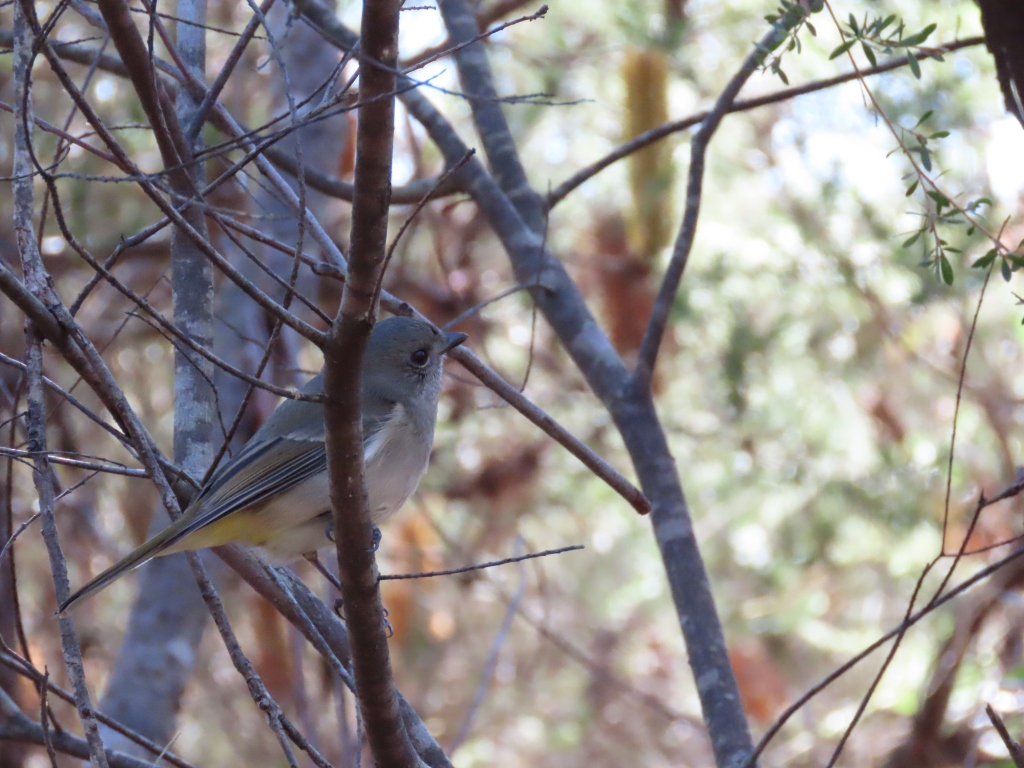
The bird is small and neat, with large dark eyes. It’s mostly grey in colour, with a striking yellow patch under the tail and olive hints on the wings. The bird was quite inquisitive, and perched not far off to examine me, with a green twig in its beak.

I’ve filmed male Golden Whistlers before: pictures and videos of the Golden Whistler’s song.
Common name: Golden Whistler
Scientific name: Pachycephala pectoralis
Approximate length: 16-18 cm
Date spotted: 16 June, 2023 (winter)
Location: Manly Dam Reserve, New South Wales, Australia: 33°46’52.4″S 151°15’07.2″E
Song of the Golden Whistler
In competition with the raucous remarks of a nearby cockatoo, this little Golden Whistler sings his heart out.
Golden Whistlers are also known as thunder birds, because evidently they tend to sing in response to loud noises. Maybe the calls of the cockatoo were actually encouraging the little songster!
Common name: Golden Whistler
Scientific name: Pachycephala pectoralis
Approximate length: 16-18 cm
Date spotted: 9 December 2020 (early summer)
Location: Manly Dam Park, New South Wales, Australia: 33°47’02.4″S 151°15’14.9″E
Golden Whistler known as thunderbird
I managed some good shots of a Golden Whistler recently. The first photo shows the pretty striping on the bird’s wings, as well as its black head and white bib. The bright colours are characteristic of a mature male bird.
I read that these birds are also called thunderbirds because they tend to sing in reaction to sudden loud noises, including thunder. What a grand name for a tiny little scrap!
A while ago, I saw my first Golden Whistler and snapped some shots of it high in the treetops. The pictures were a little fuzzy, because the bird was so far away. In that earlier post there are a couple of videos in which you can hear the song of the Golden Whistler.
These birds don’t stay in one spot for long. Here’s the bird about to head off, giving a nice glimpse of its golden front:
Common name: Golden Whistler
Scientific name: Pachycephala pectoralis
Approximate length: 16-18 cm
Date spotted: 10 March 2020 (late summer)
Location: Manly Dam Reserve, New South Wales, Australia: 33°46’27.5″S 151°14’59.8″E
Song of the Golden Whistler
It was exciting to see this pretty little bird and hear its call. This is the first time I’ve seen a Golden Whistler, though my bird book says they’re common. This one is a male, brightly coloured with clearly-delineated yellow, black, and white patches. Its song ripples through the forest.
In this video, the Golden Whistler makes a brief appearance and utters its call. Off stage, a Sulphur-crested Cockatoo squawks, and the Golden Whistler dives for cover:
Here’s a still shot of the bird. My apologies for the fuzziness – the bird was high up and far away, and my camera lens is on maximum zoom. The moon-shaped white patch is the white throat of the bird: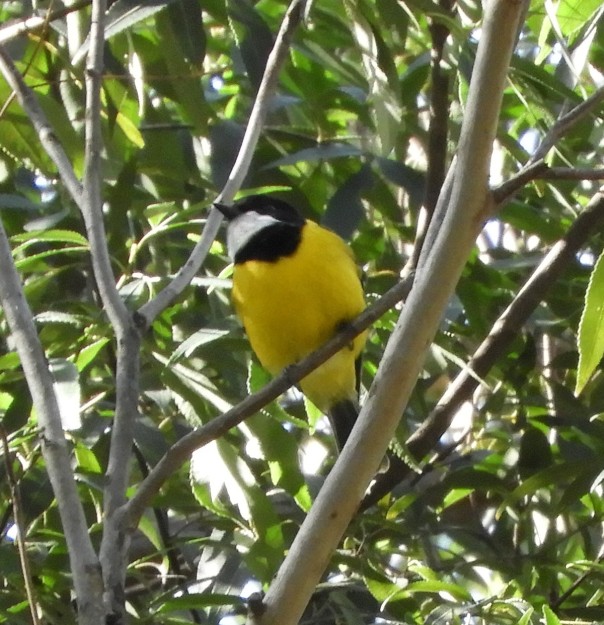
Here’s another brief video of the bird calling before he darts off again:
In the next video, the Golden Whistler enters from the right and has his say. The shot is taken with a lower zoom, so there’s more chance to stay with the bird:
The last video doesn’t show the bird, but you can hear its call and enjoy a general view of the forest, including some fungus growing on a dead tree trunk. The Golden Whistler’s call is slightly different from the earlier videos:
Common name: Golden Whistler
Scientific name: Pachycephala pectoralis
Approximate length: 16-18 cm
Date spotted: 24 August 2019 (late winter)
Location: Manly Dam Reserve, New South Wales, Australia: 33°46’48.6″S 151°14’52.3″E


